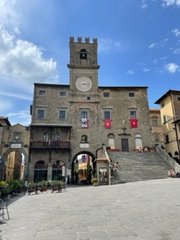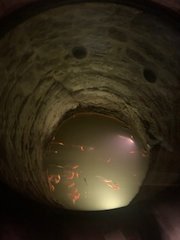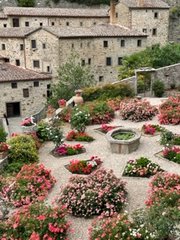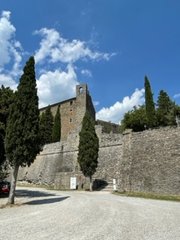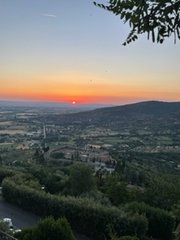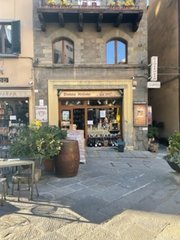Cortona, Italy: More than just under the Tuscan sun
When one thinks of Cortona, Italy, one can’t help but think of Diane Lane, Frances Mayes and the bestselling novel and movie “Under the Tuscan Sun.” However, upon deeper look, Cortona is much more.
Cortona is a picturesque hilltop, walled city with a rich Etruscan (B.C) past. Located in the Arrezo province of Tuscany, Cortona is easily accessible from Rome (126 miles) or Florence (65 miles). Day trips to Pienza, Montepulcino and Siena make Cortona a wonderful location to base for any Italian adventure.
Cortona is a melting pot of culture. It has a documented history from as far back as the 7th and 8th centuries B.C. when the Etruscans built the walls that surround the city. Cortona (Corito) has been a Roman colony and Ghibellinian city state (13th century). All of this history contributes to the sights and sounds, which one finds are ever-present while strolling the streets or visiting the shops.
While many travel to Cortona to see the famous “Casa Bramasole,” a visit to Cortona is not complete without an excursion to St. Francis’ Celle (Hermitage, “Le Celle”). Located a few kilometers from the walled city located off Case Sparse 73, Torreone, Cortona (Strada dei Cappuchini), the views and scenic nature of the valley below are worth the drive.
If you an art connoisseur, make sure to visit “Galleria il Pozzo,” located at Via Nazionale 10/12. This is one of the nicest gift shops in Cortona. In Il Pozzo you will find handmade paper, hand-bound books, beautiful art pieces from local artists, as well as hand-crafted frames for those art finds. Ivan, the owner, is a wealth of information regarding Cortona and is proud to show off his Etruscan well “ad ampulla” that has goldfish swimming in it, unaware of the history of where they have made their home.
While in the walls of the city, stop by the Accademia Etrusca (MAEC) in the Piazza Luca Signorelli, 9 next to the visitor center. Here visitors find a very large collection of Etruscan artifacts, including the “Tabula Cortonensis,” the third longest Etruscan text, thought to be dated in the 2nd or 3rd century B.C. Plan on spending two to three hours minimum to explore the treasure trove of Etruscan history. You will not be disappointed.
If you a wine sommelier, “Enoteca Molesini” (Piazza della Repubblica, 22) is one of the finest places to purchase drinkable memories of your trip. With hundreds of bottles to choose from, you will be able to sample some of the finest wines from vineyards all over Italy, including Cortona, Montepulciano and Sicily.
Finally, within a few kilometers’ drive of Cortona is the Basilica di Santa Margherita (Via S. Margherita, 1) and the Fortezza del Girifalco. Both can be toured during the same visit. St. Margaret is the patron saint of Cortona, and this Neo-Gothic church is dedicated to her. It opened in 1304 and Saint Margherita is entombed within.
After touring the Basilica be sure to walk around the side of it toward the back where the convent is. Be prepared to see one of the most stunning views of Cortona and the valley below. On a clear day you can see for miles with a view of Lake Trasimeno in the distance.
Above the Basilica looms the Fortezza del Girifalco, which is believed to have been built sometime in the 5th or 6th century B.C., although historical records date it at 1258 A.D. Make sure you take the elevator to the top of the fortress and walk around the perimeter to have a bird’s-eye view of Cortona and the lush Tuscany valley. Seasonally, there is a cafe on premises that serves sandwiches, cheese/meat boards along with wine or beer. A unique experience, well worth a visit.
While there are many who might say Cortona is only worth a day visit, it would be an injustice not to give it the time it rightly deserves. Cortona, truly is a hidden gem with layer upon layer of history, culture and, of course, wine!
Anne Marie Gennusa is a local attorney and Italophile. Along with husband Bob Lindsey and their dogs, Ali and Dixie, she owns a second home in Teverina, Cortona.


